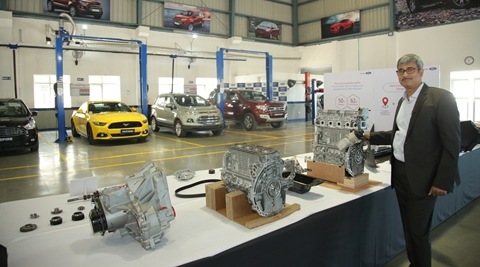Remember the Ford Escort and Ikon? They were considered to be premium American cars and naturally were status symbols in our society. However, as years passed and the cars grew older, gremlins from within started surfacing and people realised that many of the spare parts are hard to get and when they’re available, they would cost a bomb. Eventually, a widespread perception got formed across the country that Ford vehicles are expensive to maintain. Over the next few years, Ford expanded its engineering and sourcing capabilities, as a result of which localisation and reliability went up, leading to cheaper and reliable systems.
However, perception takes a longer time to be changed than formed and this meant years of work for Ford India to turn around its image. Fortunately, the company relentlessly went after the aim and came out with numerous campaigns to reflect the change to potential consumers. The recent TV commercials too are a good move by the company to debunk the myths about high-maintenance of Ford vehicles. All said and done, all this is talk for an end-consumer and what matters is the drivers of the change. In order to experience the same, we visited Ford’s Technical Training Centre in Manesar, Haryana, and this is the reality we learnt.
At Ford’s Technical Training Centre for media, there was present, N Prabhu, Vice President – Customer Service of Ford India. He spoke about how has the company been able to reduce the maintenance to a point where it now claims lowest-in-segment maintenance cost for its vehicles. The idea is simple! Rather than replacing an entire component, only the defective part can be replaced, wherever possible.
Also Read: Ford EcoSport Platinum Edition Launched in India from Rs 10.39 lakh
An example pointed out by N Prabhu was, “ Let’s say a door of the car has been damaged! Do you need to replace the entire door along with its assembly, frame and interior trim?” Most dealerships suggest doing this but that isn’t mandatory for Ford vehicles, he added. “First we assess the extent of the damage after which we tell the customer what needs to be replaced. Let’s say that only the sheet metal of the door is damaged and there is no effect on the door assembly or the interior trim. This would mean just replacing the ‘door skin’ or the door sheet metal”.
This is more logical as replacing a part that is not necessarily damaged would just entail in wasted resources and a higher cost of replacement. This replacement technique is not limited to the metallic parts and Ford extends its services to most mechanical parts which also includes transmission as well as select engine parts.
Such a practice keeps the customer loyal to the brand and prevents him/ her from resorting to the unorganised sector or a local mechanic. In addition, Ford also compared some of the parts available with its competitors. The front fender of a Maruti Suzuki Vitara Brezza costs Rs 1,825 while that of the EcoSport costs Rs 1,497 before taxes. The same stands true for other vehicles such as the Figo, Aspire and even the Endeavour.
The transparency of how much a regular maintenance would cost is also available with Ford India through a mobile application and the company’s official website. According to the website, the total maintenance cost of a Ford Figo Petrol which has completed 30,000 kms in one year would cost Rs 2,822 including all taxes. Localisation of parts has also reduced overall cost and the air filter of a Ford EcoSport costs Rs 226 compared to the Vitara Brezza which costs Rs 345.
Such aggressive spare part prices also boosts the confidence of a customer who would not be affected by a high workshop bill. This transparency in service costs has improved the market sentiment for the brand. Consolidated sales of the company grew two-folds in December 2016, and Ford sold 23,470 models over 10,865 units in December 2015. This is also due to some significant product launches in India by the company such as the Ford Endeavour, Ford Aspire and the Figo. The flagship Ford Mustang 5.0 V8 too was launched recently and while it sells in limited numbers, the car serves the purpose of being the halo product in the lineup, thereby enhancing the brand perception.
The transparency of parts replaced, aggressive pricing (in some models) and a sub-assembly strategy for maintenance of a vehicle has improved the market sentiment. For a brand which was considered to be expensive to own and maintain, the sentiment with potential car buyers is already changing
